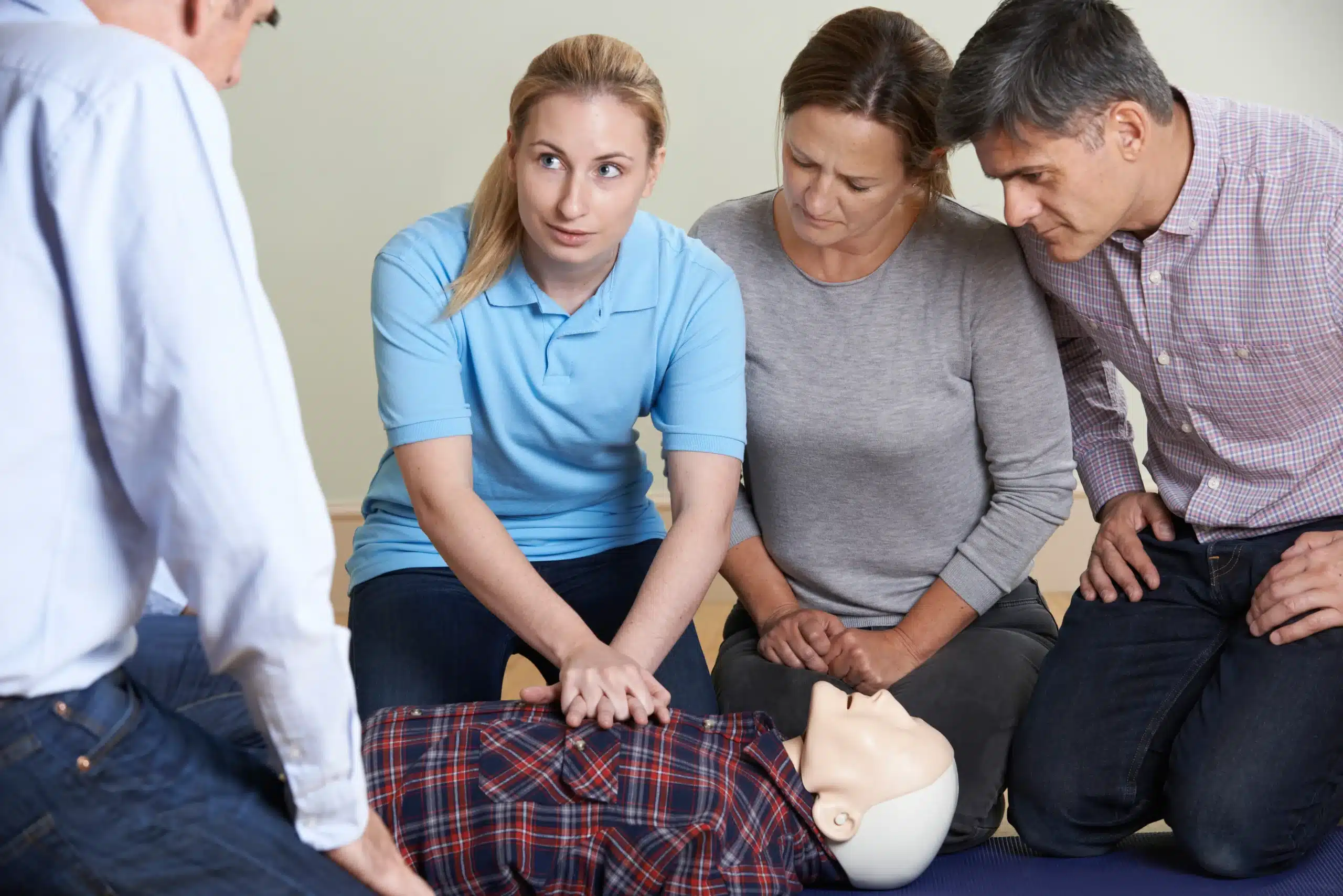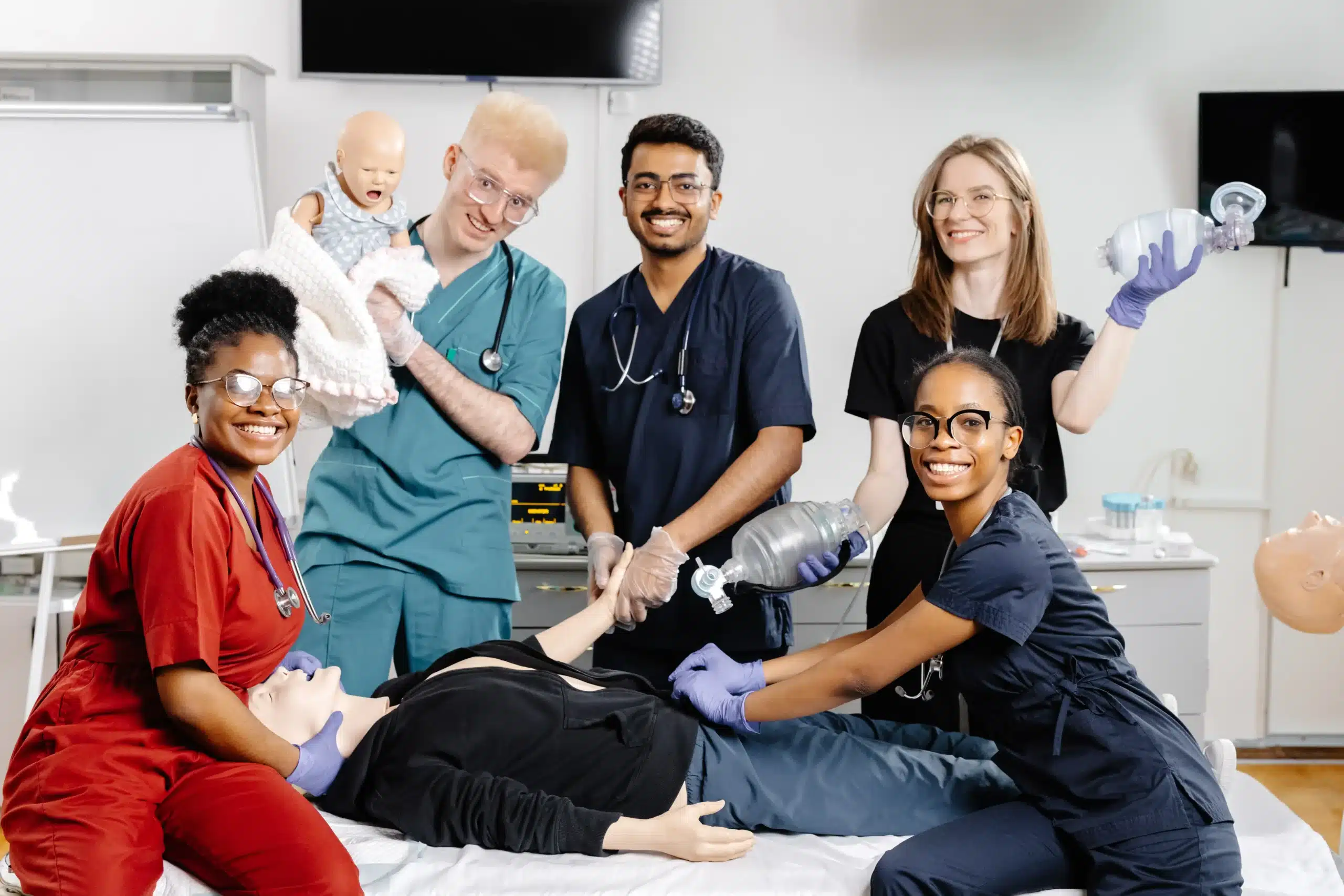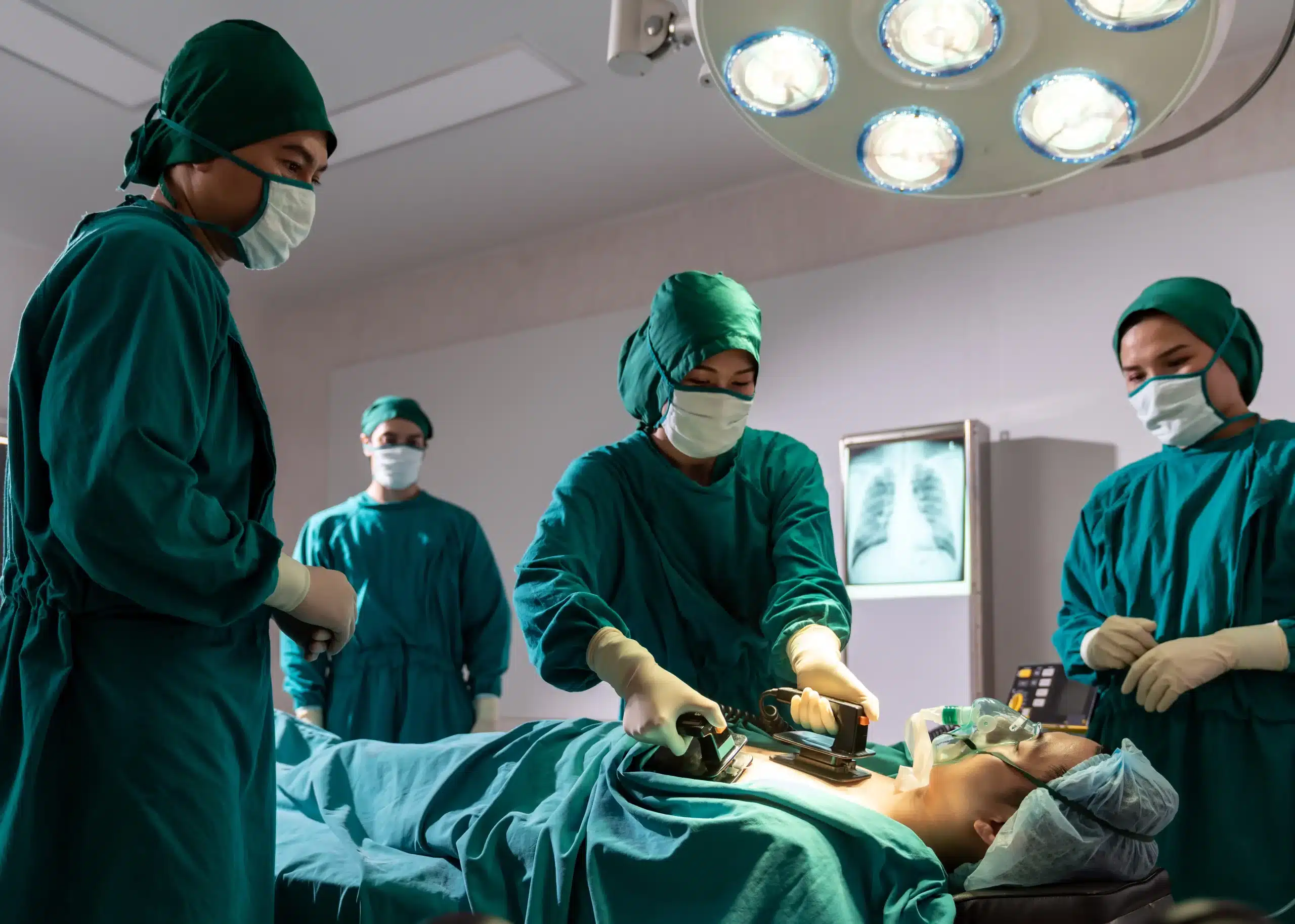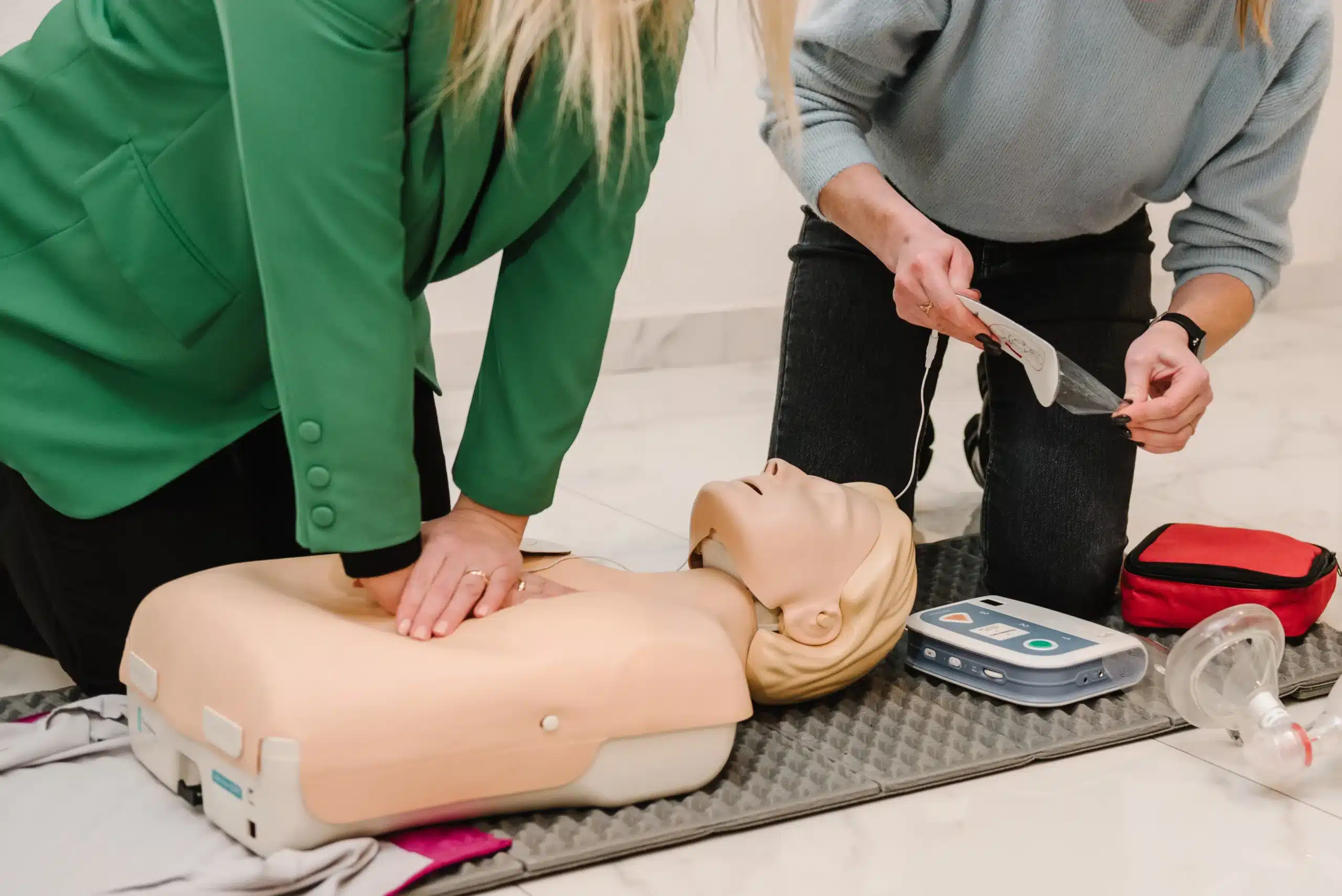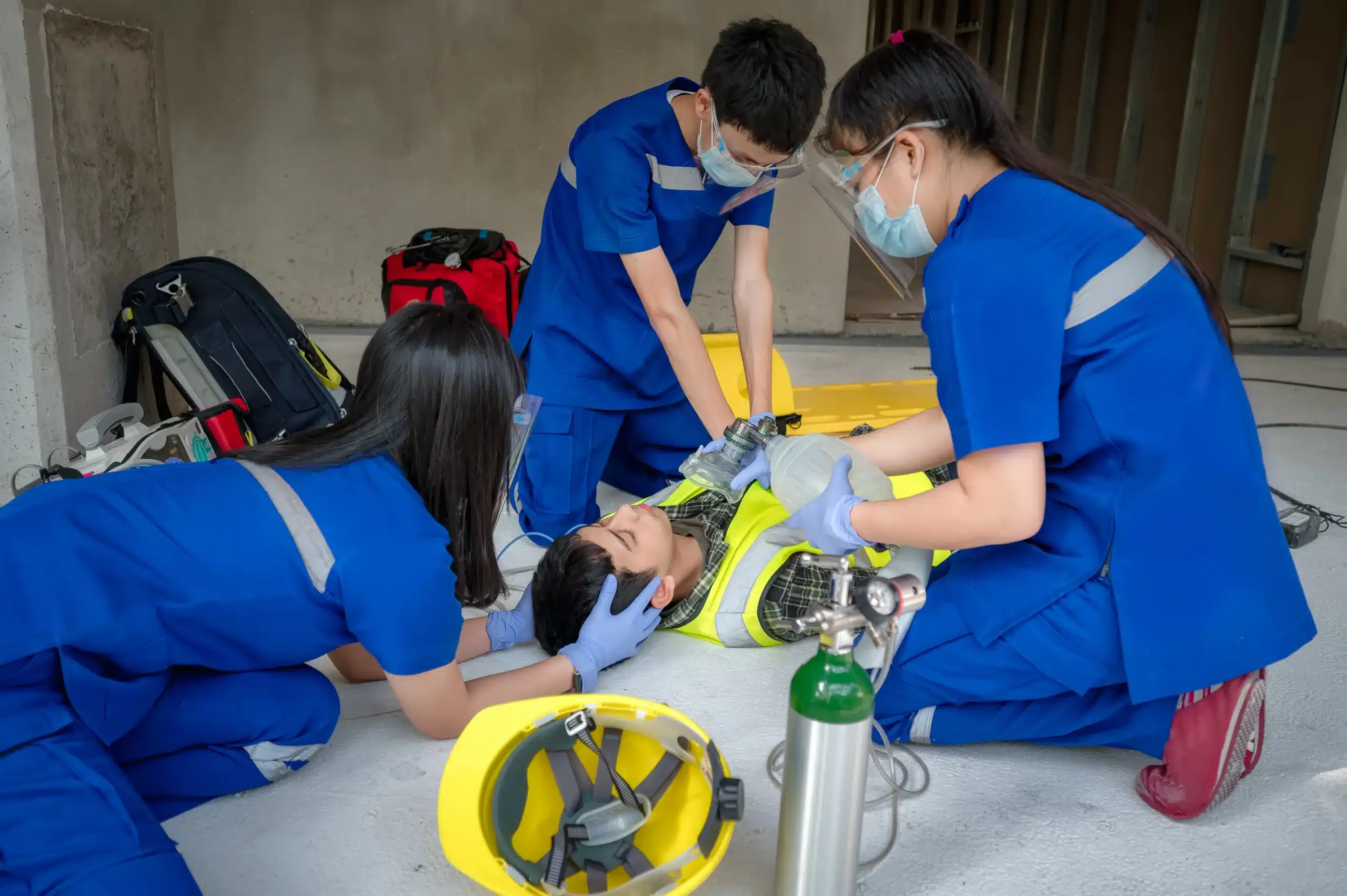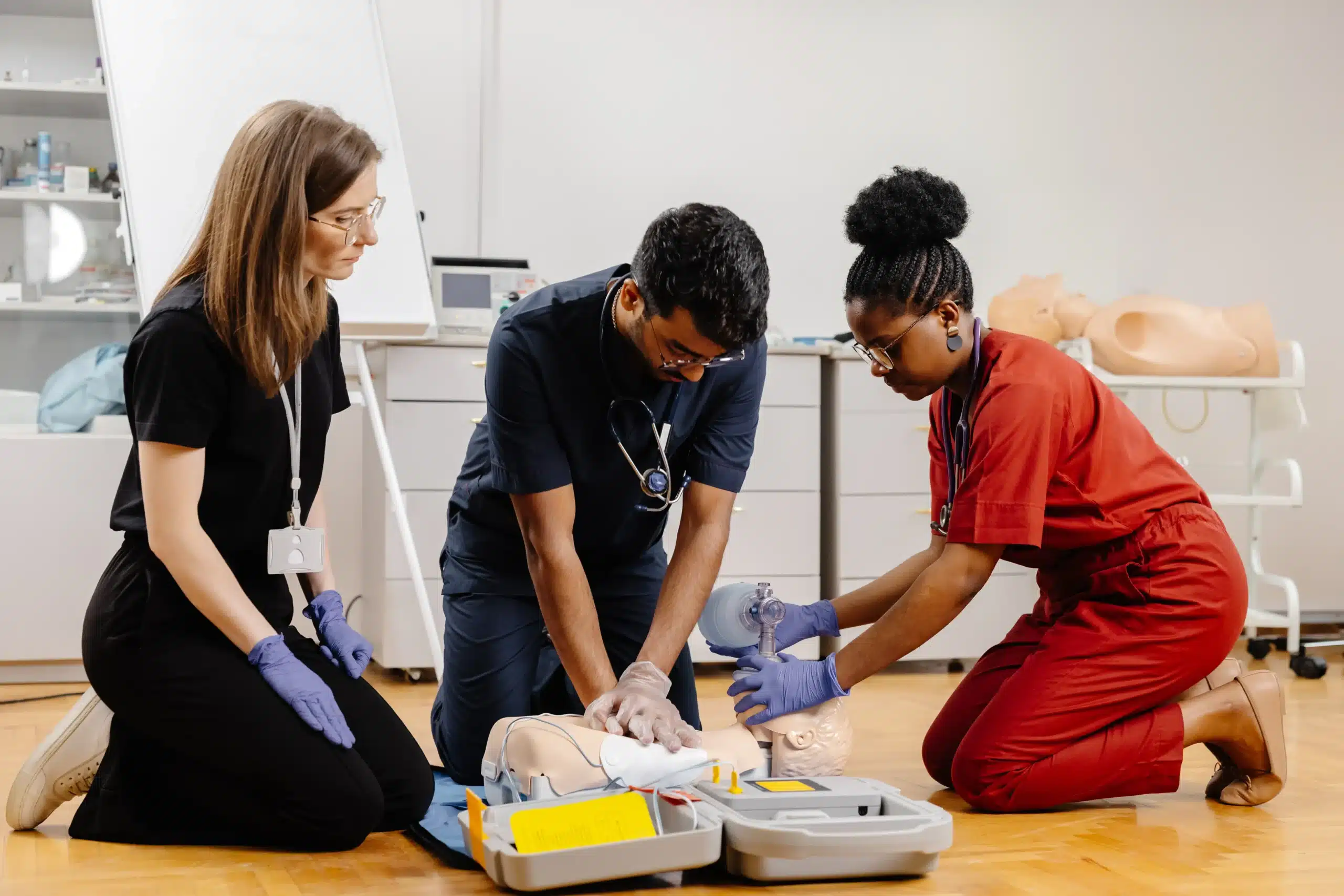Knowing how to respond effectively in a medical emergency can be the difference between life and death. Basic Life Support (BLS) training empowers you with the skills and confidence to provide immediate care in those critical moments before professional help arrives. If you’ve been searching for “BLS classes near me,” you’re in the right place. This guide will take you through everything you need to know about BLS, from the essential skills covered in training to the various certification options available. We’ll also address common concerns about cost and time commitment, explore the career benefits of BLS certification, and provide practical tips for choosing the right course. Whether you’re a healthcare worker, a parent, or simply someone who wants to be prepared, this guide will help you understand the importance of BLS and how to get certified.
Key Takeaways
- BLS empowers you to save lives: These skills are not just for healthcare professionals. Learning BLS gives you the confidence to act quickly and effectively in emergencies, potentially making a life-saving difference for loved ones or even strangers.
- Finding the right course matters: Look for accredited programs with qualified instructors, flexible scheduling options, and ongoing support resources. Reviews and testimonials can offer valuable insights into the quality of different providers.
- BLS training is accessible and affordable: With various course formats and potential discounts available, BLS certification fits a range of budgets and learning styles. Check with your employer for possible reimbursement.
What is BLS & Why Do You Need It?
Basic Life Support (BLS) is a critical level of medical care used in life-threatening emergencies. Think of it as the first line of defense before more advanced medical help arrives. It equips you with the skills to potentially save a life, whether you’re a healthcare professional or someone who wants to be prepared for anything. But what does BLS training actually involve, and why is it so important? Let’s break it down.
Key BLS Skills
BLS certification covers essential, life-saving techniques. You’ll learn how to perform high-quality CPR, use an AED, and provide basic airway management. These skills are the foundation of emergency care and can make all the difference in those crucial first few minutes of a crisis. BLS also emphasizes the importance of teamwork and clear communication during emergencies, ensuring everyone involved can work together effectively.
BLS Saves Lives
Imagine being the one who knows what to do when someone collapses. Immediate action during emergencies can dramatically improve outcomes, and BLS training gives you the confidence and skills to respond effectively. These skills are invaluable in professional healthcare settings, but they’re equally important in everyday life. Knowing BLS can help you protect your loved ones and even strangers in need. From choking incidents at a restaurant to sudden cardiac arrests at home, BLS empowers you to act quickly and potentially save a life. Learn more about the importance of BLS training.
Career Benefits of BLS
For anyone considering a career in healthcare, BLS certification is often a requirement. It demonstrates your commitment to patient safety and your ability to handle critical situations. Having your BLS certification can open doors to a wide range of healthcare professions, from nursing and medicine to physical therapy and other allied health fields. Even if you’re not pursuing a medical career, having BLS on your resume can make you a more competitive candidate in many fields, showcasing your preparedness and ability to handle pressure.
BLS Myths Debunked
One common misconception about BLS training is that it’s expensive and time-consuming. While there are costs associated with any professional training, BLS certification is surprisingly affordable, especially considering its potential impact. Many organizations offer group discounts, and some employers even cover the cost of certification for their employees. Plus, the time commitment is manageable, with various course formats available to fit your schedule. Find out more about BLS costs and renewal. Don’t let these myths prevent you from gaining a skill that could one day save a life.
Find BLS Classes Near You
So, you’re ready to get BLS certified? Great! Finding the right class is easier than you think. Let’s explore your options.
Online Class Resources
Online BLS certification courses offer flexibility and affordability. Skip the commute and learn at your own pace, fitting the training around your schedule. Many online courses provide digital materials and videos, making studying convenient. Just be sure the program you choose includes a hands-on skills assessment component, often coordinated through a local testing center, to fulfill the requirements for certification.
Local Training Centers & Hospitals
Community training programs and hospitals frequently offer in-person BLS classes. These classes provide hands-on instruction and direct interaction with instructors, which can be beneficial for those who prefer a more traditional learning environment. Plus, studies show that community-based initiatives can significantly improve bystander CPR rates. Check with your local hospitals, community centers, or fire departments for upcoming courses.
Choosing the Right Location
Whether you opt for online or in-person training, consider factors like cost, schedule, and location. Think about what works best for your budget and learning style. If cost is a concern, compare prices from different providers and look for potential discounts. Knowing the cost of BLS certification renewal is also important. Choosing a location that’s convenient for you will also make attending classes much easier.
Top BLS Training Providers
Here are a few reputable organizations that offer BLS certification:
Safety Training Seminars in Brentwood, CA
Safety Training Seminars offers comprehensive American Heart Association courses in Brentwood, CA, including BLS, ACLS, PALS, and First Aid. They provide certification cards and have a low price guarantee, with classes available in over 60 cities. Their focus on Antioch, Brentwood, and Concord makes them a convenient option for residents of those areas. Check out their website for more information on BLS certification.
American Red Cross
The American Red Cross is a well-known provider of BLS certification courses. Their training is valuable for healthcare providers and other professionals who need to know how to perform CPR and other basic life support skills. You can find a class near you on their website.
American Heart Association
The American Heart Association (AHA) offers BLS courses designed for healthcare professionals and other personnel who need to know how to perform CPR and other basic cardiovascular life support skills. The AHA is a trusted source for CPR and BLS training. Learn more about their BLS course offerings on their site.
National Safety Council
The National Safety Council also provides BLS certification, covering essential emergency response skills like CPR, AED usage, and basic airway management. They offer a variety of training options to fit different needs.
ProTrainings
ProTrainings offers affordable BLS certification courses. Their programs often include multiple-choice questions and focus on making the certification process accessible. You can explore their BLS training options on their website.
BLS Class Formats: What to Expect
In-Person, Online, & Hybrid Classes
BLS classes come in several formats to fit different learning styles and schedules. In-person classes offer a traditional classroom experience with hands-on practice and direct interaction with your instructor. This format works well for people who like a structured environment and learn best face-to-face. If you need more flexibility, online BLS certification courses let you learn at your own pace, from anywhere. These courses usually include an in-person skills session to demonstrate what you’ve learned. Hybrid classes combine online coursework with in-person skills practice.
Course Length & Hands-On Training
How long a BLS course takes depends on the format and the training provider. Instructor-led classes in a traditional classroom setting usually run about four to five hours. Blended learning courses, which mix online modules and in-person skills sessions, typically require one to two hours online, plus another two to three hours in person. No matter the format, BLS courses emphasize hands-on training so you develop the skills to perform CPR and other life-saving techniques. You’ll practice on mannequins and learn to use an AED (automated external defibrillator) in simulated emergencies.
Class Size & Individual Attention
Class sizes for BLS training vary. Some classes might have many participants, while others are smaller and more focused. Smaller classes can give you more individual attention from the instructor and personalized feedback. If that’s important to you, ask about class sizes when choosing a BLS provider. For example, Hartford HealthCare offers a range of AHA-certified courses, so you can likely find a class size that works for you.
Certification & Renewal
When you finish a BLS course, you’ll receive a certification card, good for two years. This certification shows you know BLS skills, and many healthcare jobs require it. Keep track of your certification’s expiration date and renew it before it expires. You can usually renew your BLS certification within 30 days of the expiration date. Staying current with your certification means you’re always ready to provide excellent BLS care.
How Much Do BLS Classes Cost?
Finding the right BLS class involves balancing quality training with your budget. Understanding the different pricing factors will help you make an informed decision. Let’s break down what contributes to the overall cost.
Typical Prices for Different Formats
BLS certification costs vary based on several factors. Location, the training provider, and the course format (online, in-person, or blended) all play a role. Generally, online BLS classes tend to be more affordable than in-person training. Expect to find online options ranging from $30 to $60. In-person training, which offers valuable hands-on practice, typically ranges from $60 to $100. For example, some providers offer in-person BLS classes for around $65. Blended learning, combining online modules with in-person skills sessions, often falls somewhere in between.
Discounts & Group Rates
Many training centers offer discounts, so it pays to do a little research. Look for early bird registration deals, student discounts, or promotions for healthcare workers. If you’re signing up with a group of coworkers or friends, inquire about group discounts. Safety Training Seminars offers discounted group rates, making it a cost-effective option for teams. Don’t hesitate to ask about potential cost savings.
Employer Reimbursement
If you need BLS certification for your job, your employer might cover the cost. Many organizations recognize the value of having trained employees and are willing to invest in professional development. Check with your HR department or supervisor to see if reimbursement is an option. This can significantly reduce your out-of-pocket expenses.
Hidden Costs
While upfront course fees are the most obvious expense, be mindful of potential hidden costs. Some providers charge extra for certification cards, online learning materials, or recertification fees. Carefully review the course details before you register to avoid any surprises. Understanding all the factors—course format, certification status, and any additional fees—will help you budget effectively.
Choose the Right BLS Class
Finding the right BLS class involves more than a quick Google search for “BLS classes near me.” It requires careful consideration of several key factors to ensure you receive high-quality training that prepares you for real-life emergencies. Let’s break down what to look for:
Accreditation & Instructor Qualifications
First and foremost, confirm the program’s accreditation. A recognized accrediting body, like the American Heart Association or the American Red Cross, ensures the course meets established standards. Equally important are the instructor’s qualifications. Verify they’re certified and experienced medical professionals with a passion for teaching. This expertise ensures you learn the most up-to-date, evidence-based techniques. Medicus Training emphasizes the importance of choosing accredited programs and instructors committed to ongoing training. This commitment to excellence ensures you receive the best possible instruction.
Flexible Scheduling
Life gets busy, so finding a class that fits your schedule is essential. Look for providers offering various class times, including evenings and weekends. Online or hybrid courses can provide even more flexibility, allowing you to complete the coursework at your own pace. Consider your budget and schedule when making your decision, as course formats can influence the overall cost, as noted by GB Times.
Post-Course Support
Learning doesn’t end when you leave the classroom. A good BLS course provides resources and support beyond the initial training. This might include access to online refresher materials, practice scenarios, or opportunities for continuing education. Regular practice and staying updated with the latest guidelines are crucial for maintaining proficiency, as recommended by Medicus Training. This ongoing support can make a real difference in your confidence and preparedness.
Reviews & Testimonials
Finally, check out reviews and testimonials from past students. These firsthand accounts offer valuable insights into the quality of instruction, the learning environment, and the overall effectiveness of the program. Community-based initiatives often highlight the positive impact of accessible BLS training, reinforcing the importance of choosing a reputable provider. A provider with consistently positive feedback is more likely to deliver a worthwhile learning experience. Reading reviews can give you a sense of what to expect and help you make an informed choice.
Related Articles
- Find BLS Classes in Brentwood: Your Complete Guide – Brentwood CPR Classes
- BLS Certification in Concord: Your Comprehensive Guide – Brentwood CPR Classes
- BLS ACLS PALS Training: Your Ultimate Guide – Brentwood CPR Classes
- BLS for Healthcare Providers in Brentwood: A Complete Guide – Brentwood CPR Classes
- CPR Myths Debunked for Effective Life-Saving Skills
Frequently Asked Questions
What’s the difference between BLS and CPR?
CPR (Cardiopulmonary Resuscitation) is a specific technique used within BLS. BLS encompasses a broader range of skills, including CPR, AED use, and basic airway management. Think of CPR as one tool in the BLS toolkit. BLS training provides a more comprehensive approach to emergency care.
Is BLS certification required for my job?
BLS certification is often mandatory for healthcare professionals and those in related fields. Even if it’s not strictly required for your role, having BLS certification can enhance your resume and demonstrate your preparedness for emergencies. Check with your employer or professional organization for specific requirements.
How long does BLS certification last, and how do I renew it?
BLS certification is typically valid for two years. Renewal involves completing a refresher course before your current certification expires. Many providers offer renewal courses, often shorter than the initial certification course. Staying current with your certification ensures your skills are up-to-date.
What if I’m nervous about the hands-on skills portion of the class?
It’s completely normal to feel a little apprehensive about the hands-on training. Instructors understand this and create a supportive learning environment. You’ll practice on mannequins in a safe setting, and instructors provide guidance and feedback. The more you practice, the more confident you’ll become.
What’s the best way to find a BLS class near me?
Several resources can help you locate BLS classes in your area. Check with local hospitals, community centers, and organizations like the American Red Cross and American Heart Association. Online directories and search engines can also help you find training providers and compare course offerings. Consider factors like cost, schedule, and location when making your choice.


